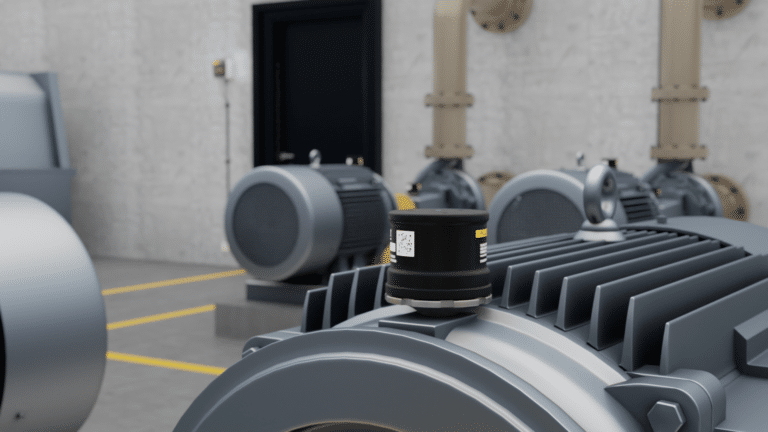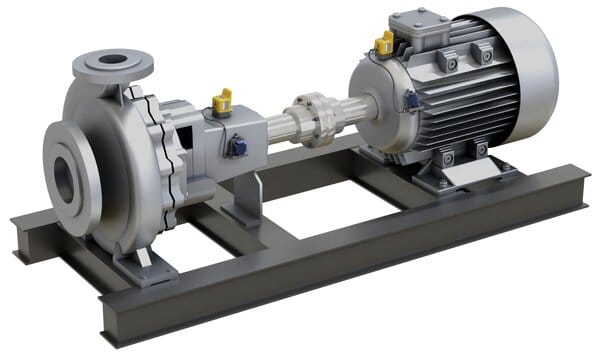Vibration sensors are a key part of any predictive maintenance program. They monitor your assets for subtle changes in vibration measurements which could indicate the machine needs to be repaired. Because vibration sensors are so effective for spotting defects, they free up your maintenance teams and reduce the need for routine inspections.
In many cases, vibration sensors can alert you to problems months, or even years, before they reach a critical level. Used right, vibration sensors can drastically increase your uptime while cutting back on your maintenance costs. There are vibration sensors available for just about every budget, so it makes sense to get to know how they work and incorporate them into your condition monitoring system.
Which vibration measurement tool is right for you? Both wired vibration sensors and wireless vibration sensors have solid benefits. Wired vibration sensors can send data quickly and continuously, while wireless sensors are easy to install and reconfigure as your company scales. The ideal solution will vary depending on your specific priorities and application requirements.
This article will look at the benefits and the downsides of both wired and wireless vibration sensors.
The Difference Between Wired and Wireless Vibration Sensors
Both wired vibration sensors and wireless vibration sensors perform the same basic functions. They measure changes in vibrations in your industrial equipment. Then, they transmit the data to a portal where your maintenance teams can access and analyze it. This makes it possible to identify and resolve maintenance concerns based on information from the machine itself, which is known as condition-based maintenance.
The biggest difference between wired and wireless vibration sensors is in the way they collect and transmit that data. Wired vibration sensors are connected to your network with ethernet cables. This makes for a high-speed and reliable connection so that your sensors can transmit data continuously.
Meanwhile, wireless sensors are usually connected through a wireless network. They transmit data in batches, instead of in a continuous stream. Depending on your business model, this may or may not make a difference. Some wireless sensors are also battery-operated.
Advantages of Wired Sensors
Wired vibration sensors are fast and reliable. They may also be slightly more secure than wireless sensors. Because they are directly connected to your network, they don’t need to broadcast data to the cloud. If you are concerned with data security, then you’ll appreciate that wired sensors make it easy to control exactly who can access your data. Wired vibration sensors tend to be easy to maintain, which means that they can save you on maintenance costs. You won’t need to inspect or repair your wireless sensors regularly.
Drawbacks of Wired Sensors
Wired vibration sensors take time to install. The installation process is costly, which is a drawback if you’re operating on a lean budget. Because of the installation process, it can also be difficult to scale your wired vibration monitoring system. Expanding your network of sensors is expensive and may interfere with your normal operations.
Advantages of Wireless Sensors
Wireless vibration sensors offer convenience and easy, low-cost installation. When you’re installing wireless sensors, you won’t need to run cables across your walls and ceilings. You won’t need to worry about trenching, or getting around natural obstacles.
Depending on your environment, this could be a huge advantage. Wired sensors can cause major headaches if you’re covering a large area, or if you are monitoring assets outdoors. Wireless sensors, on the other hand, excel at covering a large and remote monitoring area.
Wireless vibration monitoring systems are also easy to scale. You don’t need to install new cables and spend hours of labor-time when you’re using wireless. Most wireless sensors today are ready to go right away. Wireless vibration sensors also integrate well with other wireless sensors.
Wireless sensor data is also easy to access from anywhere with an internet connection; you don’t need to be on-site to see the data.
Drawbacks of Wireless Sensors
Wireless sensors sometimes have connectivity issues. If you’re in a warehouse environment, for example, you could face interference from your pallet racking or other storage materials. Wireless sensors can also have battery issues and may require more maintenance and upkeep than wired sensors.
Choosing the Right Sensor for Your Application
It can be challenging to decide which kind of vibration sensor is right for your application. In many cases, the best choice is to use a combination of wired and wireless sensors. When they are used together, their advantages and downsides complement each other, so that you end up with the best of both worlds.






